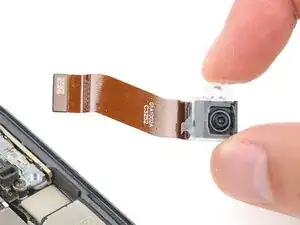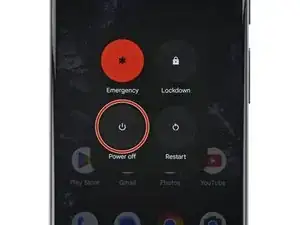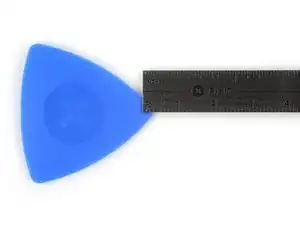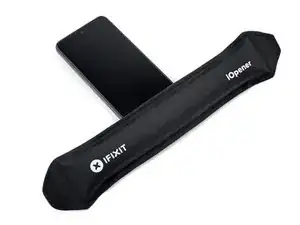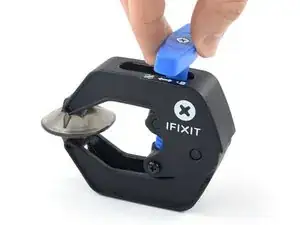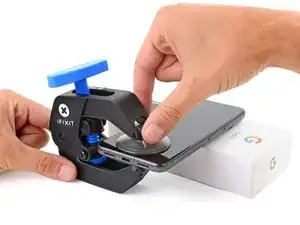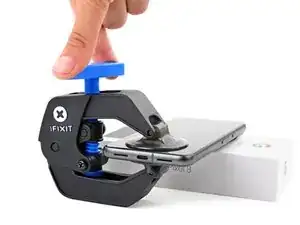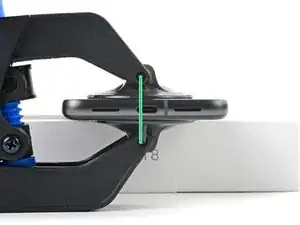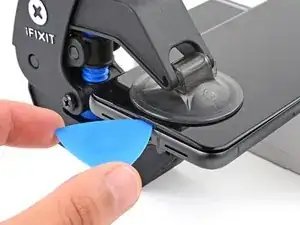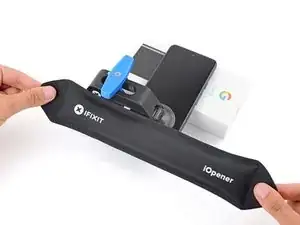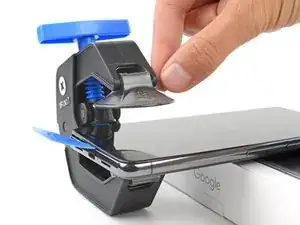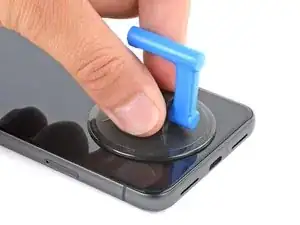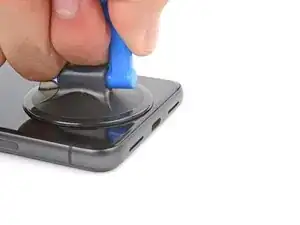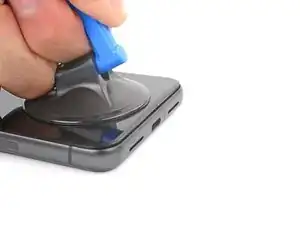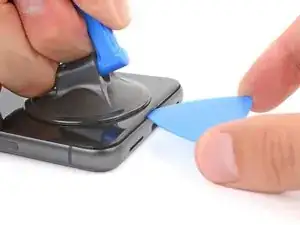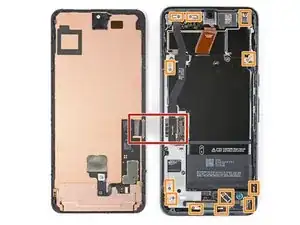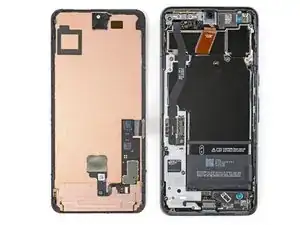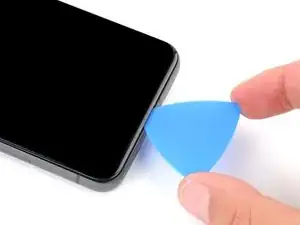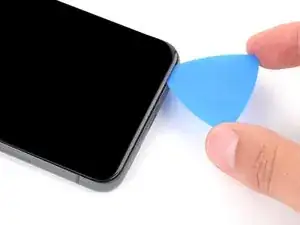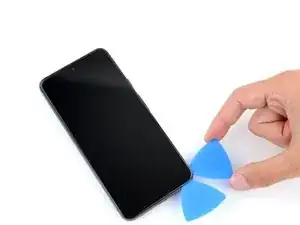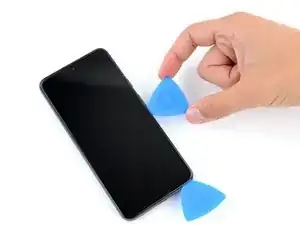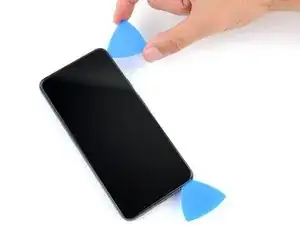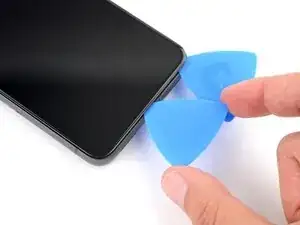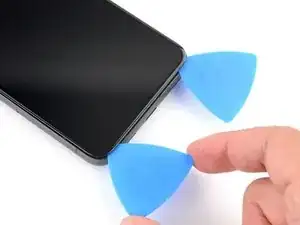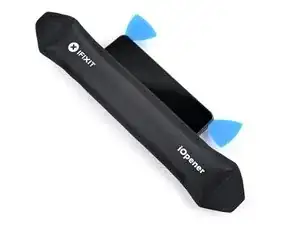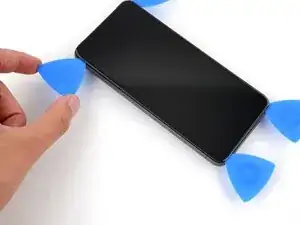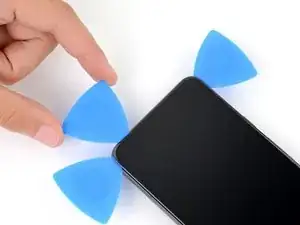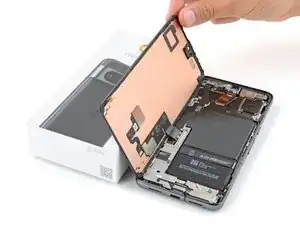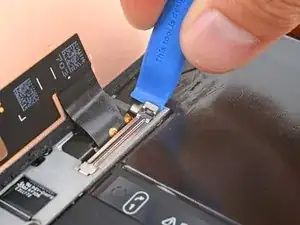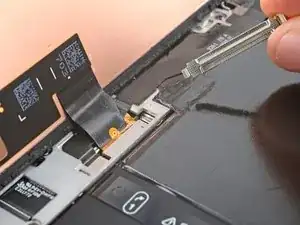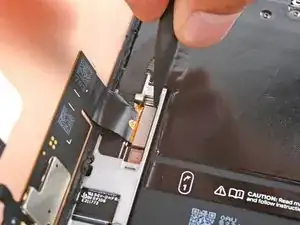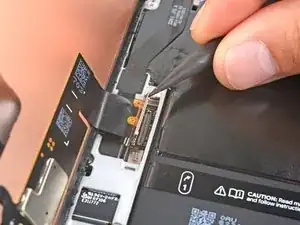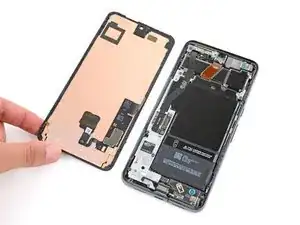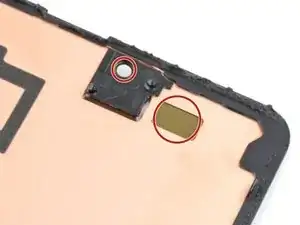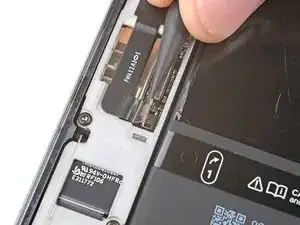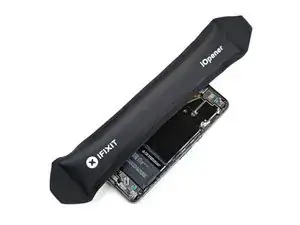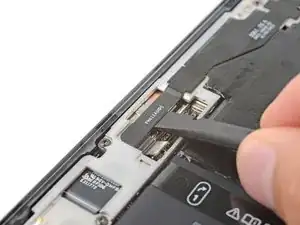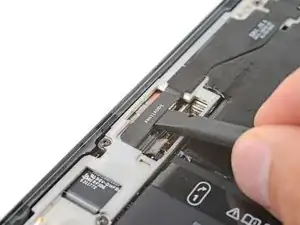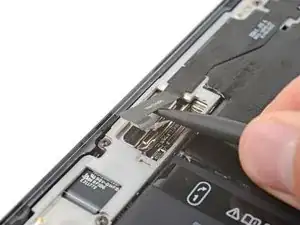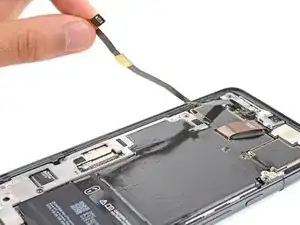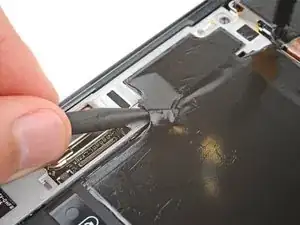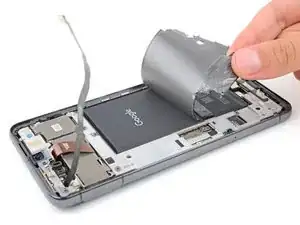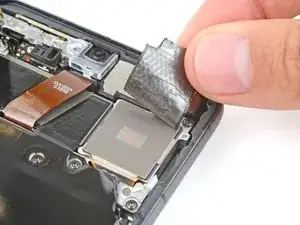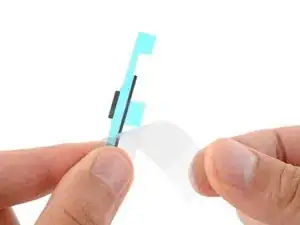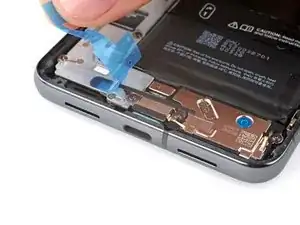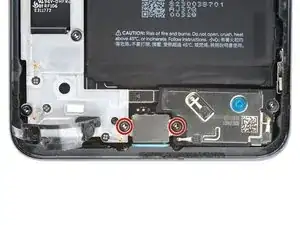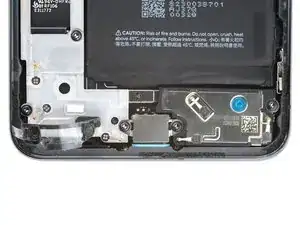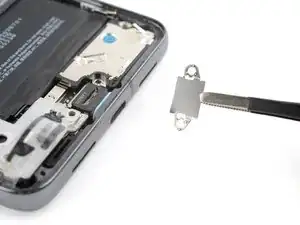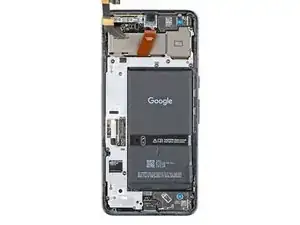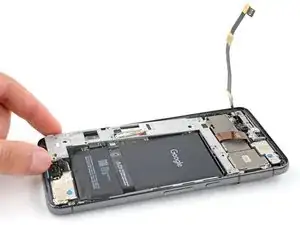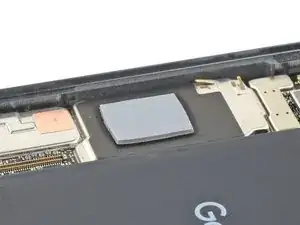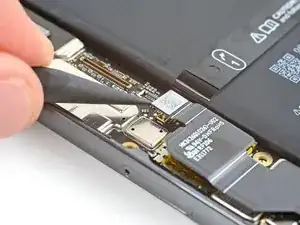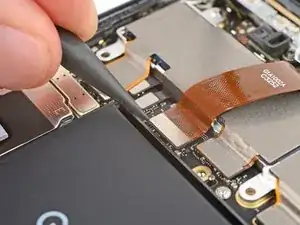Introduction
This repair guide was authored by the iFixit staff and hasn’t been endorsed by Google. Learn more about our repair guides here.
Follow this guide to replace the front camera (a.k.a selfie camera) in your Google Pixel 8 Pro.
You may need to replace the front camera if it's taking distorted or blurry photos, or not taking photos at all.
You'll need replacement screen adhesive to complete this repair.
Note: This guide was made with the 5G mmWave antenna model of the Pixel 8 Pro. If you have the non-mmWave version, you can still use this guide—just skip the steps that mention the 5G mmWave antenna.
Tools
Parts
-
-
Heat an iOpener and lay it on the bottom edge of the screen for two minutes to soften the adhesive.
-
-
-
Pull the blue handle backwards to unlock the Anti-Clamp's arms.
-
Place your phone screen side up on an object so it will rest level between the Anti-Clamp's arms—the bottom edge should be hanging off.
-
Slide the arms over the left edge of your phone, so you have access to the bottom edge.
-
Position the suction cups as close to the center of the bottom edge as possible.
-
Squeeze the cups together to create suction.
-
-
-
Pull the handle forward to lock the arms.
-
Turn the handle clockwise one full turn (360 degrees), or until the suction cups begin to stretch.
-
As the cups stretch, make sure they stay aligned with each other. If they keep slipping, remove the Anti-Clamp and apply tape for the cups to stick to.
-
-
-
Wait one minute for a gap to form between the screen and frame.
-
Insert an opening pick into the gap.
-
Pull the blue handle backwards to unlock the arms and remove the Anti-Clamp using the pull tabs on the suction cups.
-
Skip the next two steps.
-
-
-
Pull up on the suction handle with strong, steady force until a gap forms between the screen and frame.
-
Insert an opening pick into the gap.
-
-
-
The screen cable is a little less than halfway up the left edge of the phone. Be very careful here to avoid tearing the cable.
-
There are many spring contacts around the perimeter of the phone. Be very careful in these areas to avoid bending the contacts.
-
-
-
Slide the opening pick along the bottom edge to separate the adhesive securing it.
-
Leave the pick in the bottom right corner to prevent the adhesive from resealing.
-
-
-
Insert a second opening pick under the bottom right corner of the screen.
-
Slide the new pick to the top right corner to separate the adhesive securing the screen's right edge.
-
Leave the pick in the top right corner to prevent the adhesive from resealing.
-
-
-
Insert a third opening pick under the bottom edge of the screen.
-
Slide the new pick to the bottom left corner.
-
Leave the pick in the bottom left corner to prevent the adhesive from resealing.
-
-
-
Insert a fourth opening pick under the bottom left corner of the screen.
-
Slide the new pick to the top left corner to separate the adhesive securing the screen's left edge.
-
Leave the pick in the top left corner to prevent the adhesive from resealing.
-
-
-
Insert a fifth opening pick under the top edge of the screen, near the left corner.
-
Slide the opening pick to the top right corner to separate the adhesive securing the screen's top edge.
-
-
-
Place a small box or stack of books to the left of your phone so you can prop up the screen while disconnecting its cable.
-
Swing up the right edge of the screen like the front cover of a book.
-
Prop up the screen so you can access the screen cable without straining it.
-
-
-
Insert the point of a spudger under the top right corner of the screen's press connector.
-
Gently pry up and disconnect the cable.
-
-
-
Remove the screen.
-
If you replaced your screen, check the front-facing camera hole and the sensor cutout on your replacement screen, and remove any remaining liners.
-
This is a good point to test your phone before sealing it up. Temporarily connect your screen, power on your phone, and make sure it works as expected. Before continuing with reassembly, power off your phone and disconnect the screen.
-
Follow this guide to replace your screen adhesive and install your screen.
-
If you're installing a new screen, follow this guide to calibrate the fingerprint sensor.
-
-
-
Insert the tip of a spudger under the top edge of the 5G mmWave antenna's press connector.
-
Gently pry up and disconnect the cable.
-
-
-
Heat an iOpener and lay it on the 5G mmWave antenna cable for two minutes to soften the adhesive.
-
-
-
Insert the flat end of a spudger between the bottom of the 5G mmWave antenna cable and the midframe, just above the press connector.
-
Twist the spudger to separate the bottom of the cable from the midframe.
-
-
-
Insert the point of a spudger under different parts of the graphite sheet and lift until you can grip the sheet with your fingers.
-
Peel up and remove the entire graphite sheet.
-
-
-
Use the tip of a spudger to gently lift the plastic shim that runs along the top of the USB-C port cover.
-
Remove the shim and set it aside or move it out of the way so you can access the USB-C port cover screws.
-
-
-
Remove the larger rectangular liner from the shim.
-
Place the shim so the smaller piece of foam lines up with the bottom of the USB-C port cover.
-
Use the flat end of a spudger to firmly press down along the whole shim to secure it.
-
Remove the remaining liner.
-
-
-
Use a T3 Torx screwdriver to remove the two 5 mm‑long 3IP Torx Plus screws securing the USB‑C port cover.
-
Remove the cover.
-
-
-
Use a T3 Torx screwdriver to remove the seven 5 mm‑long 3IP Torx Plus screws securing the midframe.
-
To reassemble your device, follow these instructions in reverse order.
To run a diagnostics test with the built-in Pixel Diagnostic tool, click here.
Take your e-waste to an R2 or e-Stewards certified recycler.
Repair didn’t go as planned? Try some basic troubleshooting, or ask our Answers community for help.
